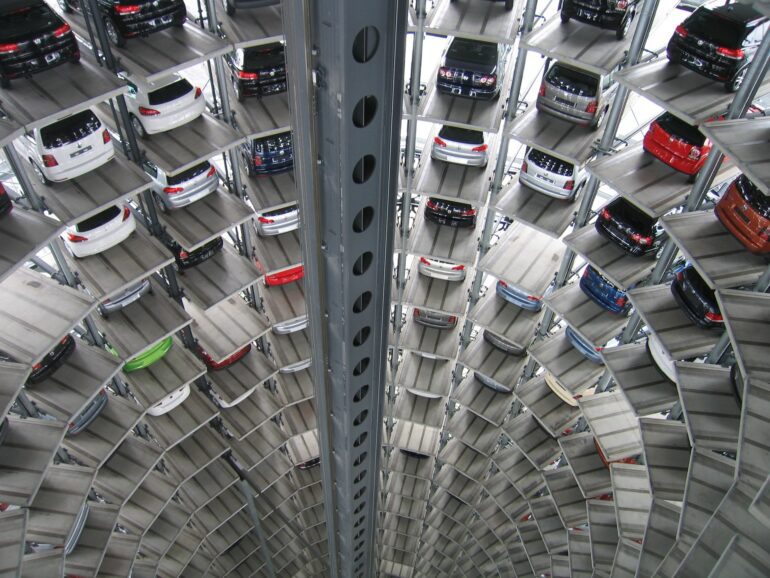TL;DR:
- AI is increasingly integrated into the automotive industry, particularly in electric vehicles.
- AI is used in accident prevention, steering and braking assistance, and automated parking.
- It has the potential for future applications such as autonomous driving and intelligent vehicle communication.
- Risks associated with AI in cars include technical errors and challenges in achieving full autonomy.
- Striking a balance between AI benefits and precautions is crucial for a safe and reliable driving experience.
Main AI News:
Artificial intelligence (AI) has become increasingly prominent across various industries, and the automotive industry is no exception. While AI has found its place in car design and production, its integration into car functions has raised questions about its potential risks and benefits. In this article, we will explore how AI is currently used in cars, the advantages it offers, and the considerations that need to be addressed for safe and reliable implementation.
AI’s role in cars, particularly electric vehicles (EVs), is already significant. Tesla, among other manufacturers, has demonstrated a strong commitment to AI integration. The primary application of AI in cars lies in accident prevention, steering and braking assistance, and automated parking. These features aim to enhance safety and simplify driving in various conditions.
Accident prevention stands as a crucial element in modern cars. For instance, Tesla’s Collision Avoidance Assist feature employs AI to provide collision warnings, emergency braking, and obstacle-aware acceleration. Autonomous Emergency Braking, a technology introduced as early as 2013, has now become mandatory in all cars sold in Europe since July 2022. By monitoring and analyzing driver behavior, AI can identify recurring mistakes and assist in preventing accidents.
In challenging driving scenarios, such as adverse weather conditions, AI can offer valuable support for steering and braking assistance. Through real-time hazard detection and adjustments, AI can help prevent accidents by gradually slowing down the vehicle when approaching other cars or traffic lights. Tesla’s Autopilot, initially introduced in 2014, has gradually evolved into a semi-autonomous driving system, demonstrating AI-like qualities. The company’s ongoing testing of Full Self-Driving, a more advanced AI-dependent system, showcases the remarkable progress in this field.
Parking, often a daunting task for many drivers, can benefit greatly from AI-powered features. Advanced parking sensors combined with exterior cameras enable vehicles to park themselves accurately and safely. Tesla’s Autopark, for example, autonomously maneuvers the vehicle into parallel or perpendicular parking spots. While currently not AI-driven, Tesla’s AI teams are actively working to improve this feature, promising further advancements in the future.
Looking ahead, the potential applications of AI in cars extend beyond the existing features. Future possibilities include automatic driving, intelligent vehicle communication, driving tests conducted by AI, and assessing the driving capabilities of older individuals. These innovations have the potential to enhance safety and convenience on the road. However, careful consideration is necessary before fully embracing AI-powered driving.
One major concern regarding AI in vehicles involves technical errors. Like any technology, AI is susceptible to system malfunctions. Relying solely on AI to ensure safety can be perilous if the technology fails. For instance, a malfunctioning hazard perception feature may fail to warn drivers of potential risks, leading to dangerous situations. In the case of self-driving cars, the risks are even more apparent, with self-driving systems still in their experimental stage. The National Law Review reports that self-driving cars have 9.1 accidents per million miles driven, more than double the rate for conventional cars.
Faulty navigation is another issue that self-driving cars may encounter. If the navigation system fails, there is a risk of the vehicle taking unintended routes, potentially leading to accidents. AI systems may also struggle with accurately detecting and reacting to unexpected challenges on the road, such as sudden obstacles or pedestrians. Achieving full autonomy requires recognizing that autonomous technology may never be perfect and that human intervention remains essential.
Tesla’s CEO, Elon Musk, initially expressed high optimism about achieving fully autonomous driving. However, the development process has proven more challenging and time-consuming than anticipated, despite the utilization of AI and powerful computers. Furthermore, an overreliance on AI in driving may lead to a decline in driver skills and responsibilities. If cars can handle most driving tasks, the need for human drivers to learn and adhere to road rules could diminish.
Conlcusion:
The integration of artificial intelligence in the automotive industry offers significant benefits, such as enhanced safety, improved driving assistance, and automated parking. However, there are important considerations regarding technical errors and the challenges of achieving full autonomy. To succeed in the market, automakers need to prioritize safety, ensure robust AI systems, and carefully balance the roles of AI and human drivers in the driving experience. Adapting to these advancements while addressing potential risks will be key to meeting consumer expectations and shaping the future of the automotive market.

